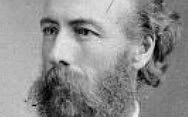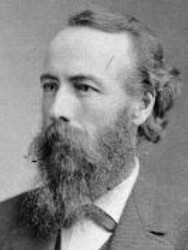(Editor's note: Second of three parts)
No history of Chattanooga's historic Cameron Hill would be complete without paying a tribute to Boynton Park and the Medal of Honor recipient for whom it was named.
A 1957 letter to the Chattanooga News-Free Press asked the question: Who was Boynton and why was the park on Cameron Hill named for him? Zella Armstrong, then-Hamilton County historian, responded that "General Boynton conceived the plan for the Chickamauga-Chattanooga National Military Park" and that the city of Chattanooga had "named a park on the crest of Cameron Hill" for him. It was an accurate but somewhat simplified answer.
Henry Van Ness Boynton was born in 1835 in Massachusetts. His clergyman father moved the family to Ohio within a decade. Boynton graduated from Woodward College in Cincinnati in the mid-1850s and then from the Kentucky Military Institute in 1858. An excellent student, he was asked to join the faculty of the military school where he taught until the opening volleys of the U.S. Civil War.
Boynton probably caught his first glimpses of Chattanooga while serving in the command of Gen. George Thomas, the "Rock of Chickamauga." Boynton was with Thomas from Mill Springs through Chickamauga and Chattanooga, where he was brevetted brigadier-general, and until the Battle of Atlanta. His experiences at Chickamauga and Chattanooga affected Boynton's future in ways he probably could not have imagined during his days of combat.
Thirty years after his actions on Missionary Ridge, President Grover Cleveland, upon recommendation of the military command and with congressional approval, presented "the Medal of Honor to Lieutenant Colonel Henry Van Ness Boynton, United States Army, for extraordinary heroism on 25 November 1863, while serving with the 35th Ohio Infantry, in action at Missionary Ridge, Tennessee. Lieutenant Colonel Boynton led his regiment in the face of a severe fire of the enemy; was severely wounded."
During the interval between Missionary Ridge and the Medal of Honor presentation, Boynton had been mustered out of service (1864) due to disability resulting from his wounds, became a Cincinnati Gazette staff writer, and, after being attached to the U.S. Army during the final year of the war, had then served 27 years as the Washington correspondent for the newspaper. In an unusual act for a Medal of Honor recipient, Boynton returned to service as a brigadier general during the Spanish-American War and was given command of Camp Thomas and the Chattanooga post. Boynton would later recall that it was during a ride across the Chickamauga battlefield that he began envisioning a national park that would preserve the past, allowing a "reconciliation between soldiers from both sides" while honoring the actions that had occurred on that site.
According to a 1904 Chattanooga Press article, it was Boynton who "drew the bill which created the park" after spending time engaged with former Confederate Gen. A.P. Stewart and others from both armies who had served at Chickamauga and Chattanooga. In addition to authoring the bill for the Chickamauga-Chattanooga National Military Park, the first former battlefield so designated, Boynton wrote a comprehensive history of the Chattanooga battles along with a historical guide to the battlefields.
In recognition of Boynton's historical preservation efforts, the Chattanooga Board of Aldermen in 1903 voted to build a park on the crest of Cameron Hill in his honor - naming it Boynton Park. George Ochs donated land adjoining the proposed park site, increasing its size to 10 acres. Gen. Boynton acknowledged their action, noting that "Aside from its views of historic ground, the wide panorama seen from this new park is worth long travel to look upon."
When the general died unexpectedly on June 3, 1905, Chattanooga offered Boynton Park, then beautifully landscaped with flowering cherry trees, rose gardens and iris plantings, as his final resting place. In a telegram to Mayor Chambliss, Helen M. Boynton responded "no telegram could convey to you our deep appreciation of Chattanooga's desire to have General Boynton laid to rest in the park which bears his name, near the historic ground where he served his country so well." However, she graciously declined the offer, noting that her late husband had indicated "years ago" that he wanted to be buried "in Arlington."
President Theodore Roosevelt and a delegation of his comrades from the Army of the Cumberland attended the service at Arlington on June 7, while Chattanooga flew its flags at half staff and posted wreaths and black bunting throughout Boynton Park.
Linda Moss Mines, the Chattanooga-Hamilton County historian, is regent, Chief John Ross Chapter, NSDAR, and vice president of Charles H. Coolidge National Medal of Honor Heritage Center.

